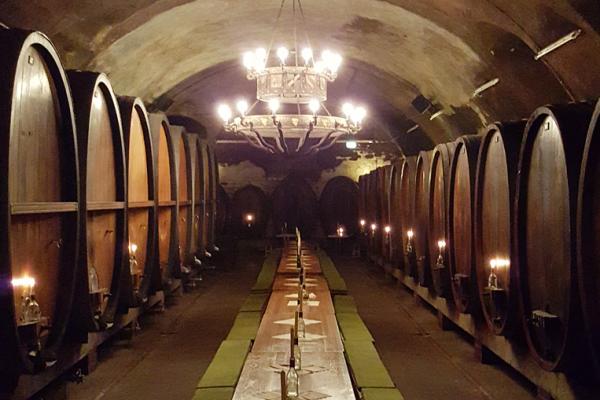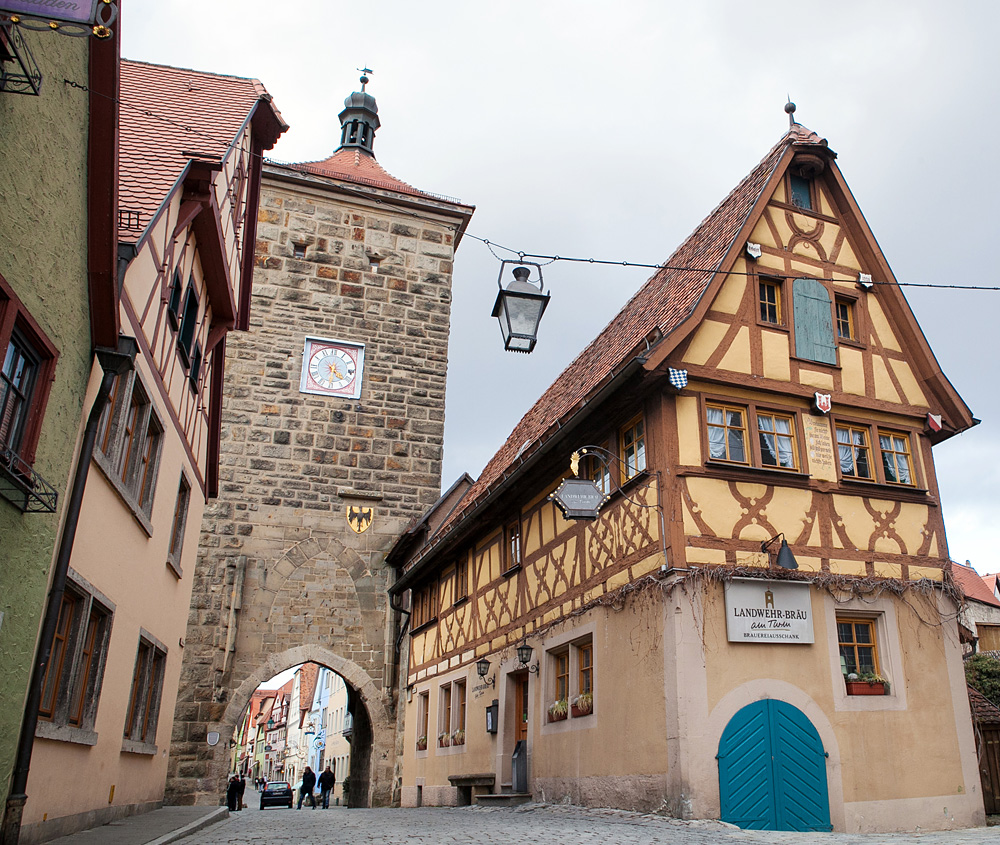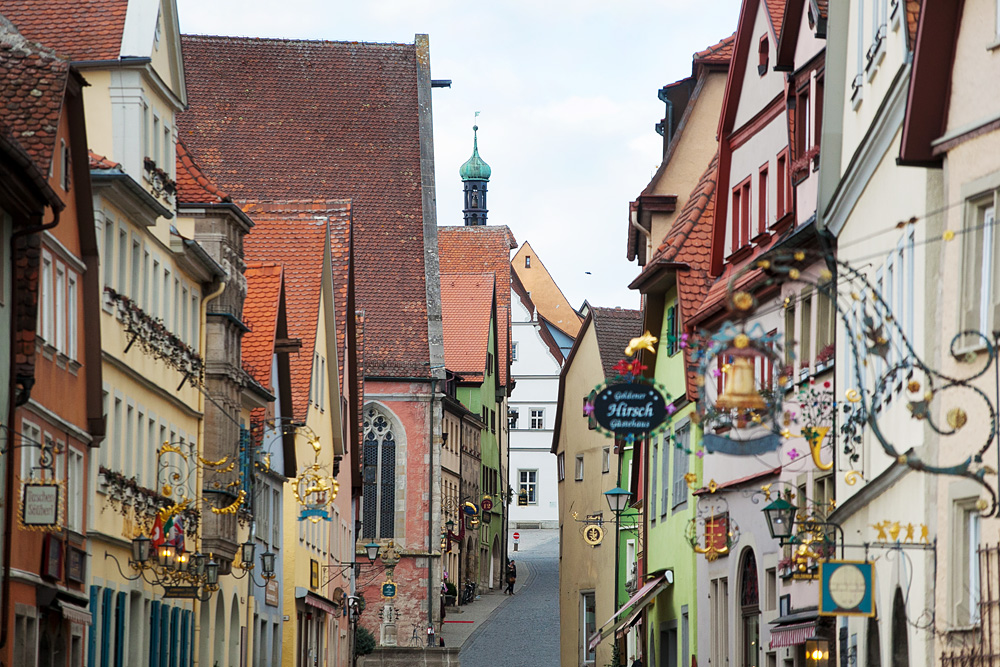Welcome Reception and Winetasting at Hofkeller Würzburg
During the Welcome Reception, you will be able to experience and enjoy the wines in one of the most beautiful wine cellars in the world - the Residenzkeller.
Extending beneath the Würzburg Residence palace over an area of about 4,557 sq. meters, these cellars are themselves also part of the UNESCO World Heritage site. These expansive tunnels and wine cellars of the former prince bishops can be traced back to a deed of gift by Embricho, bishop of Würzburg, in 1128, thus making it the oldest documented wine estate in Germany. Known previously as the “Fürstbischöflicher Hofkeller”, then “Königlich Bayerischer Hofkeller”, in 1918, the estate was turned over to the newly created state of Bavaria and renamed “Staatlicher Hofkeller Würzburg.” With 120 hectares of vineyard holdings throughout Franconia and an average annual production of approx. 850,000 bottles, it numbers among the largest wine estates of Germany.
Social Dinner
The Social dinner will take place in the famous Bürgerspital Würzburg.
Bürgerspital, a wine estate with 300 acres, is situated in a beautiful and historic courtyard right in the middle of Würzburg and is one of the oldest and largest wine estates in Germany. Bürgerspital wines have been awarded numerous prestigious national and international prizes and have won wine-tasting competitions held by celebrated sommeliers and wine journalists.
Excursion




During the conference excursion, the participants will be able to visit the cities of Bamberg and Rothenburg ob der Tauber.
Bamberg is located in Upper Franconia about 100 km east of Würzburg on the River Regnitz close to its confluence with the River Main. Because of the impressively well preserved ecclesiastical and secular buildings of the medieval period, Bamberg was awarded the title of UNESCO World Heritage Site in 1993.
Bamberg's old town unites three historical districts, the episcopal town, the island town and the market gardener's town. All three provide a fascinating example of how central European towns were built up around the basic layouts established in the early Middle Ages. As far back as 1007, when Heinrich II became Holy Roman Emperor, he was building Bamberg as a center of episcopal and sovereign power, making it the seat of the newly founded diocese and turning it into a “second Rome”.
Highlights include the Brückenrathaus (Old Town Hall), built in the middle of the River Regnitz, the magnificent Rose Garden (Rosengarten) with a panoramic view of the old town, the Altenburg castle, the former residence of the bishops, the Michaelsberg Abbey (Kloster Michelsberg) and the fisherman's village from the 19th century. Five churches in the form of a Latin cross mark the layout of the town. The historical townscape features numerous monuments from the 11th to the 18th century and some 1,200 architectural monuments. The imperial cathedral of St. Peter and St. George is the most prominent building of Bamberg. Inside are the Bamberg Rider (Bamberger Reiter), the tomb of Pope Clemence II, and the tomb of the Emperor Heinrich II and his wife Cunigunde. Next to the Cathedral Sphere (Domplatz) are located the picturesque Old Palace (Alte Hofhaltung) and the impressive baroque New Residence (Neue Residenz).
And, last but not least, Bamberg is very well-known for its beer culture. Bamberg has nine breweries in town and nearly 100 in Bamberg County making it the region with the highest brewery density of the world. The brewing traditions go back a thousand years and Bamberg is famous for its smoked beer (Rauchbier), the traditional brewery inns and the wonderful beer gardens and beer cellars (Bierkeller). The excursion lunch will be held at the Klosterbräu brewery, the oldest brewery in Bamberg.
Rothenburg is a historic town in the district of Middle Franconia located on a plateau overlooking the River Tauber. It is well known for its picturesque old town, a destination for tourists from around the world. It is also part of the Romantic Road route through southern Germany. Rothenburg was a Free Imperial City from the late Middle Ages to 1803.
The name "Rothenburg ob der Tauber" means exactly "Red fortress above the Tauber". As to the name "Rothenburg", some say it comes from the German words rot (red) and burg (burgh, medieval fortified settlement), referring to the red color of the roofs of the houses which overlook the river.
Rothenburg ob der Tauber is a worldwide symbol of German romance. Artists have long taken inspiration from the unique location of this medieval town whose skyline is characterized by 42 gates and towers.
The beautiful townhouses and the romantic Röderbrunnen fountain, together with the Röderbogen Arch and the massive hipped roof of the Markus Tower, form a wonderful ensemble that is one of the most popular subjects for photographers in Rothenburg. The Röderbogen Arch, with the slim clock tower and the sharply pointed roof, dates back to the 12th century and was part of the town’s first fortifications, later replaced by the outer ring wall.
Narrow towers and imposing ramparts; winding alleyways and picturesque oriels; half-timbered houses lovingly decorated with window boxes and hanging baskets; colorful gardens made for rest and relaxation; large churches that invite meditation and prayer – these are just some of the things that attract visitors from all over the world to Rothenburg ob der Tauber.





